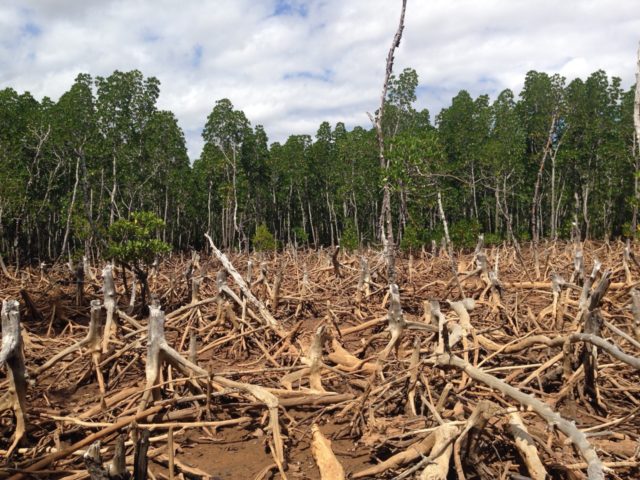By Nathan Kiwere
The world has registered massive changes in the environment, occasioned by a mélange of natural factors and negative human practices. The rapidity with which the environment is changing around the world in general and Uganda in particular should worry everyone. Good News will be publishing a series in the subsequent editions about the 10 environmental issues that should worry you. The intention is not to foment fear among readers, but to create awareness in order to inspire responsible living. The first of this series is on deforestation: the case of Uganda.
Changing trends
While I was young, going to the village was such a great adventure. The village was a stark contrast to the concrete jungle that typified Kampala city where I was born and bred. The village was full of life, with a variety fruit trees everywhere; banana plantations created kilometres of canopies over the narrow dirt road that led to our home. During the season, mangoes would waste away on the ground because there were not enough people to eat them.
Fast-forward to 2019, things have totally changed. The banana plantation canopies have all vanished and been replaced by open spaces revealing the distant horizons; the erstwhile rotting mangoes in the bush are now to be found in the trading centre as nearly all the trees have been cut by villagers to bake bricks. Even the vintage grass-thatched huts that gave the village that rustic sense are no more because villagers can no longer find spear grass with which to thatch them. It is a tale of the manner in which trends have changed the vegetation cover for good. The statistics concerning the decimation of forest cover in Uganda are mindboggling.
Deforestation statistics
Deforestation has many side effects some people don’t realize. According to a 2016 State of Uganda’s Forests report by the National Forestry Authority (NFA), we may only have 10 per cent of the rainforests left by 2030 – the rest have been cut down for wood or wood pulp products, or cleared for agriculture. In the case of Uganda, the forest estate has shrunk from 24 per cent of the total land area in 1990 to 9 per cent in 2015. In terms of acreage, a total of 3.05 million hectares were lost in a span of 25 years. Out of this loss, about 2.2 million hectares were from the woodlands.
The records also indicate the forest estate outside Protected Areas (Pas) reduced from 68 per cent of the total forest land area in 1990 to 61 per cent in 2005 and down to 38 per cent in 2015. This means almost half of the unprotected forests have been cleared in just 25 years. According to Tom Rukundo, director of natural forests management at NFA, agricultural expansion and charcoal burning contribute to 80 per cent of the destruction of forests in Uganda. And why is NFA not doing something to cub this pattern? “Our mandate as NFA is restricted to the protection of central forest reserves, we cannot control private forests,” Rukundo told this writer. As a result of the growing negative practices on the environment, Rukundo says we are witnessing climate change, characterized by unpredictable rain patterns, landslides in Eastern Uganda and floods in Kampala, among other disasters.
Why are Ugandans cutting down trees?
One of the biggest causes of deforestation is the reclamation of these areas into farmlands. For example, many forests in the central region, Masindi and Hoima districts have been turned to farmlands due to their perceived fertile soils and the lure of high returns from investments in agriculture. Masindi and Hoima forests have been converted to sugarcane plantations.
The booming construction industry is one of the agents fueling illegal pit sawying that has more or less wiped out forests. Due to the scarcity of trees for conversion into timber, pit sawyers have gone as far as cutting mango, jackfruit trees which they claim have good timber.
Why forests should be preserved
Forestry is crucial to the lives of millions of Ugandans, especially the poorest sections of society. The dependence of poor people on forest resources and their ability to improve their livelihoods through forestry has for long not been adequately recognised in Uganda. Direct benefits are in form of food, energy, employment, incomes, quality of life and increased resilience to shocks and stresses. Forests and trees provide support to agriculture and many environmental services that are taken for granted or are poorly understood. Supply of clean water and maintenance of soil fertility are among major services provided by forests and trees, and are important to the poor who cannot afford alternatives such as piped water and fertilizers. Because these services are considered “free”, they are undervalued and without investment and adequate protection of forests and trees, they are declining fast. In addition, more than 70 per cent of the planet’s plant and animal species live in forests. Species lose their habitat through deforestation. Ecosystems die out. Climate change continues. All said, strategic efforts need to be devised and implemented flora and fauna will keep disappearing at the same pace.






















